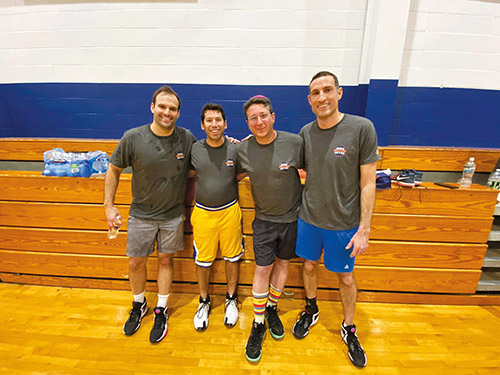


Rabbi David Bashevkin recently asked me:
“So an Ironman triathlon is 2.4 miles of swimming, 112 miles of biking, 26.2 miles of running?”
“Yes,” I replied as I watched the wheels turn in his head.
“How do you even train for something like that?”
That is actually the second most common question I get when people find out that I’m an Ironman.
(What is the first?)
“So how many days do you have to finish the race?”
(17 hours, right?)
Right.
My Ironman train has four phases: base, build, peak and taper.
(What about carbo loading?)
That is part of tapering…and we will discuss that another time.
Base lasts for the first three months. In base phase my week looks like this:
Sunday: Bike for 60 minutes in the house, then climb down off my bike and go for a three mile run.
Monday: Swim 2,000 meters.
Tuesday: Bike 45 minutes.
Wednesday: Run 6.2 miles (10k).
Thursday: Bike 45 minutes.
Friday: Swim 500 meters.
Saturday: Rest.
(So most of these “activities” take between 40-60 minutes?)
Yes.
(So why is it called “base?”)
You are laying the base foundation of your training.
(Oh…)
The idea is to focus on form, build strength and increase your aerobic endurance.
(Your what?)
Swim straighter, cycle efficiently and build running stamina.
(Why didn’t you say so?)
Because Triathlon has morphed from casual exercise into your college biomechanics lab experiment.
As coaches…
(You are a coach?)
Didn’t you read the little gray box at the bottom of the article?
(Sorry.)
Now where was I?
(Coaches)
We like to measure the athletes’ progress by quantifying data.
(So in base phase you are writing up lab reports on what color the base or acid turned?)
Something like that. It’s all about repeatable data.
(Now it sound like high school science lab.)
The only way I can see if the training is working is if I’m swimming straighter, getting stronger and building stamina.
(So how do you know if it’s working…in “non-coach speak?”)
I record my workouts on my watch.
(The Apple watch does that?)
It does, but I use a smart watch called a Garmin.
(A gremlin?)
Garmin is an American company founded by two men Gary and Min. Hence the company name is a composite of its founders names. Garmin released the first GPS tracking watch for endurance athletes back in 2003.
(What is a GPS tracking watch?)
President Bill Clinton declassified Global Positioning Satellite technology in the 1990s. Now thanks to the “eye in the sky,” I know how far I ran, how fast I ran and how efficiently I ran.
(So the government is really tracking our every move?)
Only if you are swimming, biking or running.
(So why not get an Apple watch?)
Apple watches are cool, but I have two reasons for using Garmin:
1. Garmin’s battery lasts four times longer than Apple’s.
2. I don’t have an iPhone.
If my first week, my swim pace average was two minutes per 100 meters…
(Why would you only swim 100 meters?)
You, in the corner, and listen.
(Snickering.)
Stop that….if I averaged two minutes per 100 for 2,000 meters, I should see that pace getting faster over the first three months.
Between December and March I dropped the average pace from 1:59 to 1:55. If I continue that trend I may end up exiting the swim five minutes sooner and when you only have 17 hours, every minute counts.
(So what happens during the “build” and “peak” phases?)
You are going to have to wait a few more weeks to find out…
By David Roher
David Roher is a USAT certified marathon and triathlon coach. He is a multi Ironman finisher and a veteran special education teacher. He can be reached at TriCoachDavid@gmail.com











